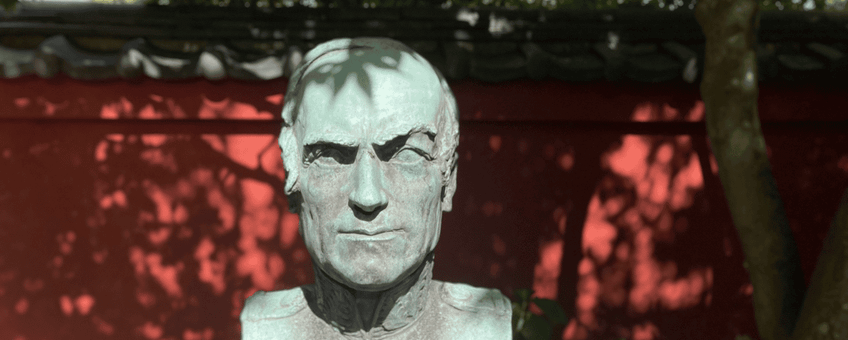
A green pharmacy: medicinal plants in the Leiden Hortus botanicus
Hortus botanicus Leiden As a volunteer at Hortus Leiden I look after plants. Watering, repotting, and pruning are my main tasks. These activities are rewarding and enlightening. One of the new things that I learnt is that pests can be controlled with natural enemies. As a result, I now also apply biological control of pests at home.
As a volunteer at Hortus Leiden I look after plants. Watering, repotting, and pruning are my main tasks. These activities are rewarding and enlightening. One of the new things that I learnt is that pests can be controlled with natural enemies. As a result, I now also apply biological control of pests at home.
Philipp Franz von Siebold
Next to looking after plants as a volunteer, I just graduated as a physician. And I am not the only one who combined the love for plants and healthcare at the Leiden Hortus. In the Japanese garden, you can find a statue of Philipp Franz von Siebold, a German physician and botanist, who worked for the Dutch government on the Japanese island Deshima between 1823 and 1829. If you want to know more about this scientist, you should definitely visit the Japan Museum SieboldHuis at walking distance from Hortus Leiden. At Deshima, Siebold taught Western healthcare, which was still unknown there at that time. He collected and exported unique Asian plant species to Europe. Many of these have become well known European gardens plants, such as Wisteria hortensia and W. azalea. Flora Japonica is Siebold's most famous work and a tribute to the native plants of Japan.
Medicinal plants
Over the past centuries, plants have not only been used as ornamentals, but also as medicine. When Von Siebold treated patients, his pharmacy likely contained plants, as these were, next to surgical knives, the only remedies available at that time to cure diseases. Traditionally, extracts of shepherd's purse (Capsella bursa pastoris), nowadays considered a weed, were used to stop postpartum bleeding. Several modern studies confirm this effect.


Medicine against malaria
Herbal medicine may sound like something from the past but has been applied all over the world up to today. In the seventies, Chinese researchers discovered that annual mugwort (Artemisia annua, of which several close relatives can be found in the Clusius garden in the Leiden Hortus) produces a compound that can cure malaria. The discovery of this compound, Artemisinine, meant a huge step forward in fighting malaria, as it had less severe side effects than the earlier discovered cure kinine, produced by the Cinchona tree (also present in Hortus Leiden).


Plants as antidote
Some plants can also be used as antidote. Every year, people end up in hospital after consuming poisonous mushrooms, usually death caps. Death caps look very similar to edible common field mushrooms. While common field mushrooms can be consumed in large quantities, consumption of a single death cap can already be lethal. Seeds of milk thistle (Silybum marianum, also present in the Clusius garden) contain an antidote, silibinine, that is used up till this day to save lives of consumers of death caps.
Arms race
In short, plants have many medicinal properties that have been – and will continue to be – applied by physicians. Use of antibiotics made many bacteria resistant against chemical treatments. A continuous arms race between bacteria and other pathogens on the one hand, and newly designed chemical drugs on the other hand, urges for the discovery of new plant-based medicines. It might very well be that a compound from a plant in Hortus Leiden will drive a new scientific breakthrough. When you walk through this botanical garden, please check our Plant Finder to discover which diseases were cured with the plant you are looking at.
Text: Maxim Bax
Images: Maxim Bax (lead photo: statue of Philipp Franz von Siebold in Japanese garden of Hortus botanicus Leiden); Jeff Korsmit, Hortus botanicus Leiden; Flora Japonica; Michel Langeveld, Wikimedia Commons
